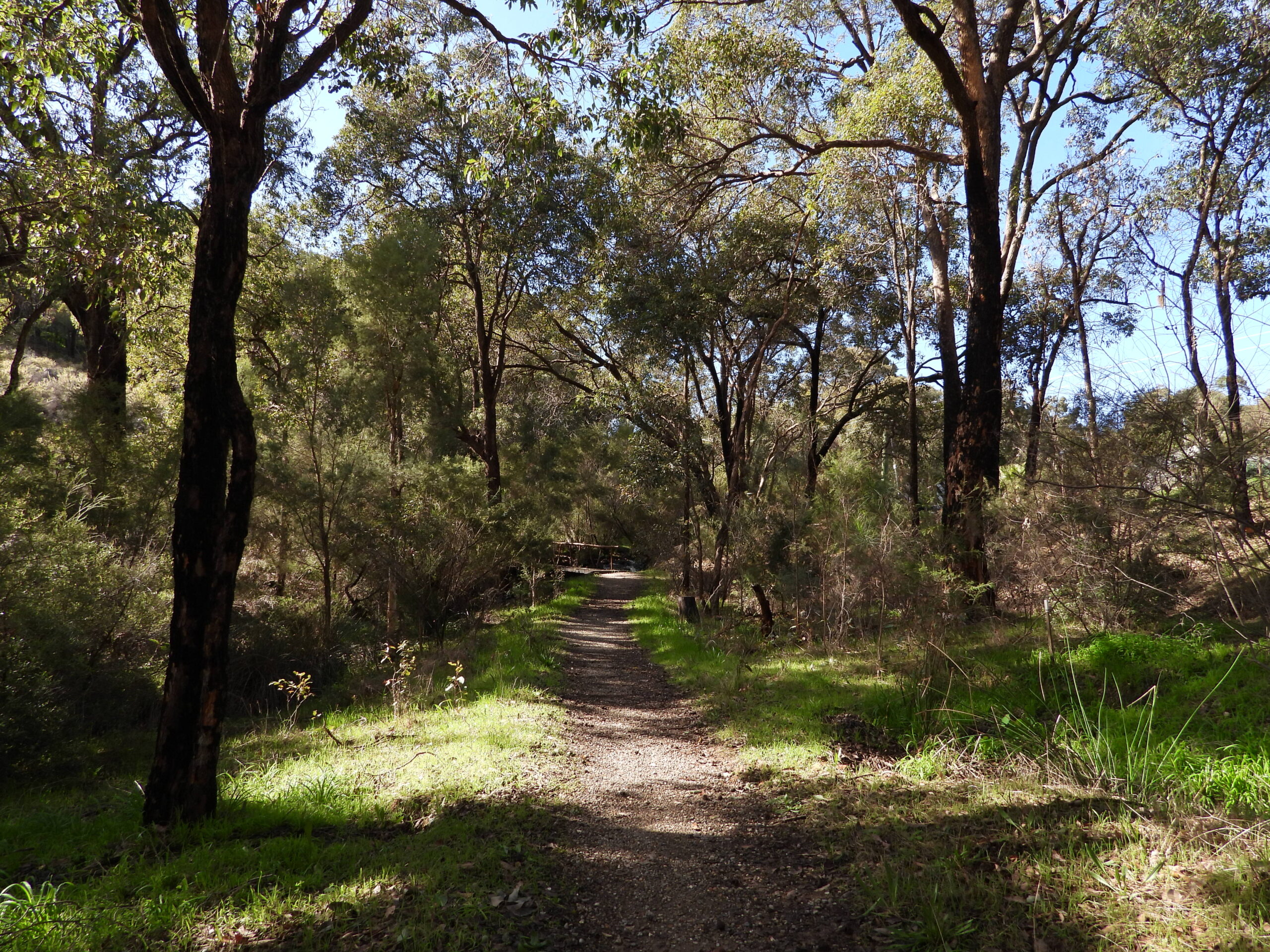Darling Range Branch, 20 September 2025

It was a beautiful day, and the creek was fully flowing when an intrepid group of 17 bird watchers on the DRB Nats excursion set off around the Upper Lesmurdie Brook Loop trail. They were guided by two long-standing members of the DRB Nats, our bird boffins Rachel and Mike Green. They conducted a bird survey of the area from August 2024 to July 2025, and everyone received a list of the 41 bird species they saw during this period. It made a useful checklist.
From the start, the importance of not only looking for birds but also listening for birds was emphasised, especially as many of the local birds are small and frequent the tops of the tall trees. The calls of both the Australian Weebill and the Western Gerygone were played from David Stewart’s Australian Bird Calls App to remind people what to listen for.
In a group of this size, it is easy to make noise, which masks the sounds of the bird calls. Therefore, everyone was asked to stop chatting and allow silence so we all had the best chance of hearing and locating the birds. The group did really well, keeping quiet; many an excursion is reduced in value by the chattering in a group. Not today! Thanks, everyone.
Upper Lesmurdie Falls is a beautiful place, and some in the group had never been before, even though they lived within the area, but they were keen to return. Sadly, since we had gone on a weekend, there were many other people also enjoying the scenery, and several with children were making noise, while dogs were running off-leash.

The Upper Lesmurdie Brook has been completely renovated and restored thanks to the hard-working and innovative Friends of Upper Lesmurdie Falls group, members of which will be speaking at our next DRB meeting on 10th October 2025. A look at their website reveals before-and-after photographs, along with an excellent flora database. Their work includes stream rehabilitation, propagating and planting local plants, weed eradication, installing a series of seats, and establishing signs that explain relevant Noongar stories, among other initiatives.
As predicted, a greater number of birds were heard rather than seen, but we compiled a list of 19 species shown on page 2.
Brown honeyeaters were by far the most familiar bird. We had hoped to see some bird nests, but unfortunately, we found none. In previous visits, Rachel and Mike had found several nesting sites. Maybe next time?
Thanks so much to everyone who came, and to Bradley Cox and Arlene Quinn for helping to organise it. It was a great outing.
Rachel Green

